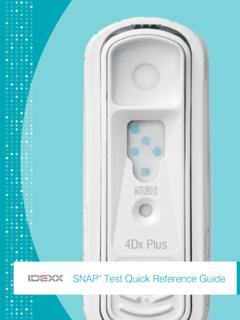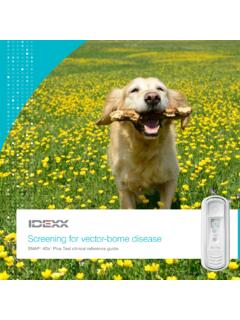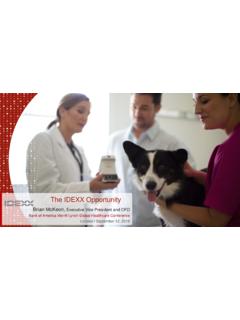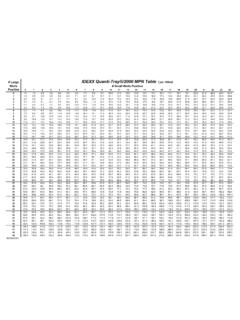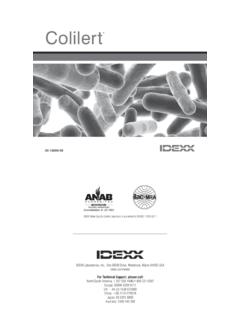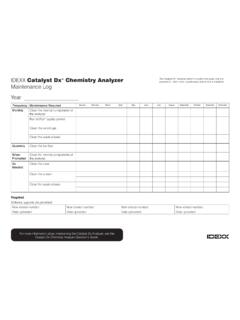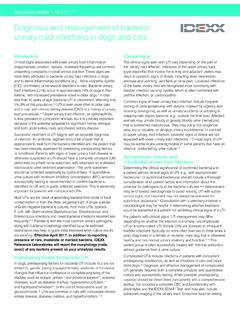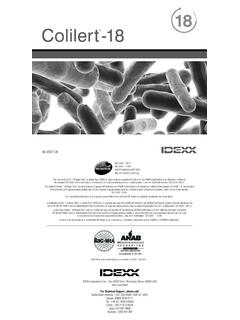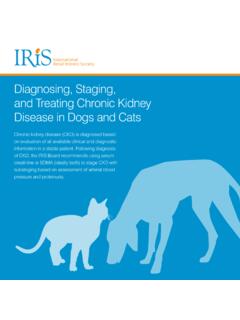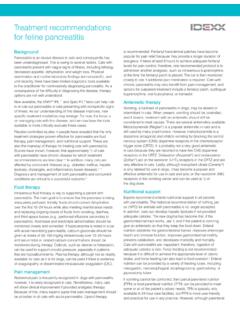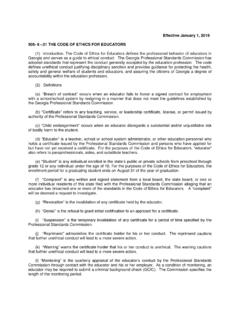Transcription of ELISA Technical Guide
1 ELISA Technical Guide2 ELISA Technical GuideTable of contentsIntroduction ..3 ELISA technology ..4 ELISA components ..6 ELISA equipment ..7 Equipment maintenance and calibration ..8 Reagent handling and preparation ..9 Test component handling and preparation ..10 Quality control ..11 Sample handling ..12 Pipetting methods ..14 ELISA plate timing ..16 ELISA plate washing ..17 Plate reading and data management ..19 ELISA troubleshooting ..20 Appendix A: Gravimetric pipette calibration procedure ..24 Appendix B: Inventory control tracking chart ..25 Appendix C: Laboratory tracking chart ..26 Appendix D: Maintenance and calibration schedule.
2 27 Appendix E: Quality control quick check ..28 Notes ..293 ELISA Technical GuideIntroductionIDEXX manufactures diagnostic tests for the detection of diseases in ruminants, equines, swine, and enzyme-linked immunosorbent assay ( ELISA ) is one of the most sensitive and reproducible technologies available. These assays are rapid, simple to perform, and easily automated. idexx introduced the first commercial poultry ELISA for infectious bursal disease (IBD) in 1985 and the first commercial livestock ELISA for Aujeszky s disease/pseudorabies in 1986, enhancing the way laboratories test production with any assay, the reproducibility and reliability of ELISAs depend upon proper technique and attention to detail.
3 This ELISA Technical Guide will increase your awareness of ELISA techniques and help you maintain proficiency with this methodology. Check your product insert for specific instructions for each assay you perform. Periodically, improvements and revisions are made to product inserts. Therefore, it is important to review the protocol on a regular basis. If you have questions concerning any of the following information, please contact your local idexx ELISA Technical GuideAn ELISA is a set of standardized reagents and microwell plates manufactured for a specific test. An idexx ELISA may contain some or all of the following components: coated plates (solid and/or strip plates), sample diluent, controls, wash concentrate, conjugate, substrate, and stop solution.
4 The tests are manufactured in batches or lots. Each component of each test lot is optimized and manufactured to work as a unit. The tests pass many quality-control procedures conducted by idexx , numerous worldwide reference laboratories and agencies, and/or the United States Department of Agriculture (USDA) before they are approved and released for sale. The ELISA is a rapid test used for detecting and quantifying antibodies or antigens against viruses, bacteria, and other materials. This method can be used to detect many infectious agents in ruminants, equines, swine, and poultry. In ELISA technology, the solid phase can consist of a 96-well polystyrene plate.
5 The function of the solid phase is to immobilize either antigens or antibodies in the sample as they bind to the solid phase. After incubation, the plates are washed to remove any unbound material. In some assays, the conjugate is then added to the plate and allowed to conjugate consists of either an antigen or antibody that has been labeled with an enzyme. Depending upon the assay format, the immunologically reactive portion of the conjugate binds with either the solid phase or the sample. The enzyme portion of the conjugate enables detection. The plates are washed again and an enzyme substrate (hydrogen peroxide and a chromogen) is added and allowed to incubate.
6 Color develops in the presence of bound enzyme, and the optical density is read with an ELISA plate reader. Note: The steps and reagents used can vary in an ELISA . Refer to the product insert for specific technology5 ELISA Technical GuideELISA formatsIndirect formatIn the indirect format, antigens are coated on the plate. The sample antibody, if present, is sandwiched between the antigen coated on the plate and an enzyme-labeled, anti-species globulin conjugate. The addition of the substrate (enzyme substrate-chromogen reagent) causes color to develop in the wells where antibody is present. This color is directly proportional to the amount of bound sample antibody.
7 The more antibody present in the sample, the stronger the color development in the test wells. This format is suitable for determining total antibody level in in an Indirect ELISA AnitbodiesAdd sampleWash + ConjugateWash + SubstrateclearBlueRead optical densityAntigensLight blue orStopAntigensWash SubstrateWash + ConjugateAdd sampleClearBlueRead optical densityAntibodiesStopSteps in an indirect ELISAS teps in a blocking ELISAS teps in an indirect antigen-capture ELISAB locking formatIn this format, the specific sample antibodies block the enzyme-labeled, specific antibody in the conjugate. As shown in the graphic, the antibodies in the sample and in the conjugate both bind to the antigen coated on the plate.
8 Adding an enzyme substrate-chromogen reagent causes color to develop. The color intensity is inversely proportional to the amount of bound sample antibody. The more antibodies present in the sample, the less intense the color development in the test antigen-capture (sandwich) ELISA :In the indirect antigen-capture ELISA , the antigen in the sample is bound by the antibody coated on the plate and by the detector antibody contained in the added detector solution. The detector antibodies are not enzyme-labeled. The conjugate added in the next step can bind to the antibody of the detector solution. If the conjugate binds to the detector solution, a color reaction takes place.
9 The antigen is thus indirectly provide the ability to: Test a large number of samples at the same time. Automate the procedure using robotics or other types of automated equipment. Computerize the calculation and reporting of ELISA Technical GuideCoated plates The 96-well plates are made of polystyrene and coated with either inactivated antigen or antibody. This coating is the binding site for the antibodies or antigens in the sample. Unbound antibodies or antigens in the sample are washed away after diluentMost assays require a specific dilution of the sample. Samples are added to the sample diluent and mixed prior to putting them onto the coated plates.
10 ControlsThe positive control is a solution that contains antibody or antigen. The negative control is a solution without antibody or antigen. The controls help to normalize or standardize each plate. Controls are also used to validate the assay and to calculate sample results. In some tests the controls are prediluted and ready to use, and in other tests the controls must be diluted the same as the samples. Be sure to follow the instructions in the product conjugates are enzyme-labeled antibodies or antigens that react specifically to plate-bound sample analytes. Unbound conjugate is washed away after incubation and before the addition of substrate.
